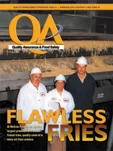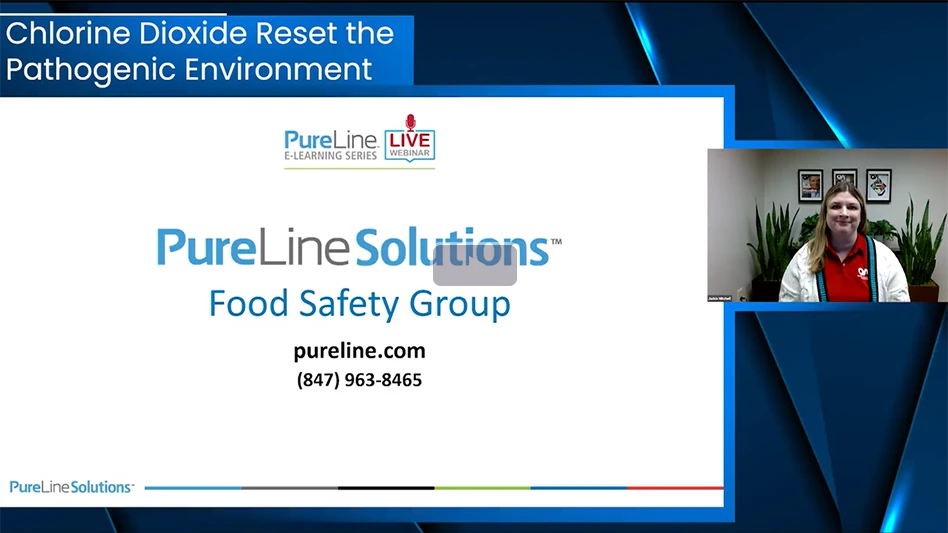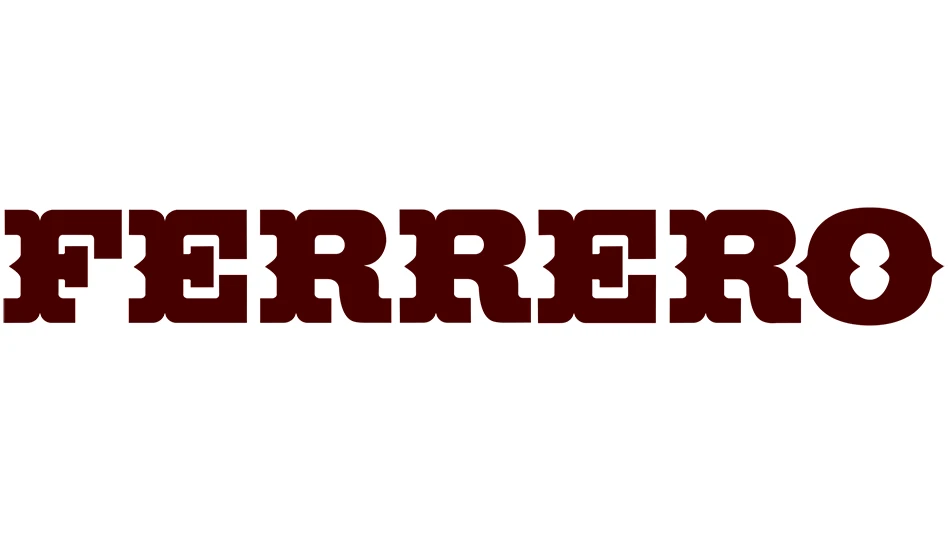In the popular literature, the red-legged ham beetle (RHB) is often described as a pest of dried meat. The implication seems to be that unless you are producing dried fish, hams, bacon, jerky treats, or cheese, that this insect is nothing more than an occasional invader in food processing plants. Within my own experience, I first encountered this beetle more than 25 years ago in the basement of an old meat packing plant. Greasy meat residue on a bone saw that was retired-in-place (but not thoroughly cleaned) was heavily infested. This feeding habit and finding these beetles on hams hung in smoke houses gave rise to the name red-legged "ham beetle."
Since my initial encounter, I have battled this insect as a major pest in pet food processing plants (both in finished products and raw ingredients such as meat and bone meal), as well as peanuts and cashews in snack food plants. In addition to these foods, the RHB also has been reported in cocoa beans and spices, but seems to prefer oily high-protein materials. This beetle also feeds on corpses and is a time-of-death indicator used by forensic entomologists. Not only is this beetle a destructive threat to stored foods because of its feeding habits, it is also a potential pathogenic vector.
The RHB is of tropical origin where it is popularly known as the "copra beetle." Copra, or dried coconut meat, is harvested in the tropics and shipped world-wide for use in the production of coconut oil. Exposed during the sun-drying process in Third World tropical nations, coconut meat, spices, dried fish, and cashews (oily high-protein food sources) are readily infested by the highly mobile and cosmopolitan RHB.
The RHB is often found in close association with the hide beetle (Dermestes species) since both species scavenge on similar foods. But in addition to its preferred dry high-protein diet, the RHB (like most beetles in the family Cleridae) is also a predator; it readily feeds on the eggs and larvae of various flies, beetles, and other insects that are attracted to sun-dried foods or decaying meat.
LIFE CYCLE
Adult beetles are strong fliers, but feed on the surface of the infested commodity. Salvaging infested foods by simply scalping away the top few inches is not recommended since chemical secretions from this beetle can impart a rancid aroma and bitter taste to the commodity. Unlike most stored product beetles, females can live over 12 months, and produces more than 1,000 eggs during that period. Eggs are deposited in small clusters in protected depressions on the food surface. Eggs hatch in four to five days and larvae bore into the food where they complete four or five molts in about 21 days under laboratory conditions.
Prior to pupation, the larva migrates near the surface of the food and performs a very un-beetle like activity: it produces a silken puparium. If the food consists of particulate matter (e.g. bone meal or powdered cheese), the silken puparium will incorporate food particles as part of its protective camouflage. On the other hand, if the food is a solid mass such as a Cheerio®-shaped piece of cat kibble, the silken puparium is constructed within the central hole. In addition to the colorfully distinctive adults and mobile larvae, food particles that are glued together or silken puparia in solid foods are visual clues that inspectors should be watching for. Under field conditions, the entire life cycle from egg to adult requires about 45 days.
UNIQUE ADULT FEATURES
The RHB has several characteristics which distinguish it from all other stored product beetles. These include:
a) Size. Most adult stored product beetles are less than 5mm in length. Examples include the red and confused flour beetles at about 3mm, the cigarette beetle at 2-3mm, and the saw-toothed grain beetle at about 3mm.The RHB measures in at 5-7mm in length.
b) Color. Traditional stored product insects are quite drab, and tend toward reddish-brown so as to blend in with their food source. The RHB is metallic blue-green with red or amber colored legs. Antennae, which are very distinctive in shape and color, are nearly as long as the head and thorax combined, and are distinctly clubbed. Like the legs, the antennal shaft is amber in color, but the three-segmented terminal club is black. No other commonly encountered stored product beetle has this combination of antennal features.
c) Activity. Adults are very active and run across the surface of the infested commodity. When disturbed or in dispersal mode, adults readily fly. While some stored product beetles are capable of flight, most are ambulatory and prefer to stay on or near the food source.
UNIQUE LARVAL FEATURES
Though not even remotely related or comparable in biology, the RHB larva is more similar in appearance to the cadelle than it is to any other stored product beetle.
l Both species have an elongated, flattened body with parallel sides, are pale in color with dark plates on the pronotum, and bear a single pair of short, stout spines (urogomphi) at the end of the abdomen.
l While the cadelle is creamy white and shiny, the red-legged ham beetle larva is dusky yellow (tawny) and moderately hairy.
l Both larvae are active and readily bore into durable materials: the cadelle can bore into wood while the RHB readily penetrates leather-like meat and even bone, and is a very good package penetrator.
Interestingly, the RHB larva runs forward and backward with equal ease. This ability is no doubt a survival strategy which allows the larva to retreat into its bore hole, as well as to run for cover and evade the cannibalistic adults!
CONTROL CONSIDERATIONS
The RHB prefers temperatures of 86-104°F, and a relative humidity of 50%. The minimum temperature for survival is around 60°F; remember, we are talking about a tropical species. The red-legged ham beetle prefers oily or greasy food with a very low moisture content, but must have a warm moist (tropical) environment for survival – conditions that are common in food processing plants. This beetle can multiply in and migrate throughout most food processing plants, but its environmental requirements prohibit outdoor survival throughout most of North America.
Even though RHB can survive outdoors in the southern states and will invade food plants, most infestations are usually traced back to a failure in the incoming goods inspection program rather than invasion from the outside grounds. These large, active beetles are readily visible, and receivers working with high-risk commodities must be vigilant.
Unlike most stored product insects, no pheromone trap is commercially available for this insect. Sticky traps (glue boards), insect light traps, and visual inspection of high-risk commodities are essential monitoring tools for QA professionals and pest control service technicians. Even though this is a large and active insect it is susceptible to most commonly used residual insecticides. Unfortunately, this pugnacious beetle with a boring larval stage is largely unaffected by pyrethrin sprays. Fumigation can be effective, but maximum allowable concentrations must be used.
Interestingly, foods infested by red-legged ham beetles have a quite distinctively acrid aroma. Coupled with the pathogenic concern with the RHB, this off-aroma condition has serious implications for most food processors. For instance, aroma-sensitive foods such as chocolates and pet foods that must satisfy stringent organoleptic criteria could be rendered unusable even if disinfested. (Remember, peanuts and cashews are often used in candy making, and these commodities are frequently infested with red-legged ham beetles.) In most cases infested raw materials and finished products cannot be reconditioned and must be disposed, which can be very costly.
This is truly an insect that is best controlled through "denied access," particularly a well-designed and active incoming goods inspection program. Stock rotations, in-house inspections, and thoroughly cleaning seasonal or seldom used manufacturing equipment are vitally important in food plants using RHB-sensitive ingredients. QA
The author is a consulting entomologist and president of Technical Directions, Inc., P.O. Box 5392, Decatur, AL 35601. Holcomb can be reached at HMikeL@msn.com.

Explore the October 2006 Issue
Check out more from this issue and find your next story to read.
Latest from Quality Assurance & Food Safety
- Kim Heiman Elected to Second Term as President of Wisconsin Cheese Makers Association
- FAO Launches $150 Million Plan to Restore Ukrainian Agricultural Production
- Pet Food Company Implements Weavix Radio System for Manufacturing Communication
- Penn State Offers Short Course on Food Safety and Sanitation for Manufacturers
- USDA Announces New Presidential Appointments
- FDA to Phase Out Petroleum-Based Synthetic Dyes in Food
- IFT DC Section to Host Food Policy Event Featuring FDA, USDA Leaders
- CSQ Invites Public Comments on Improved Cannabis Safety, Quality Standards





